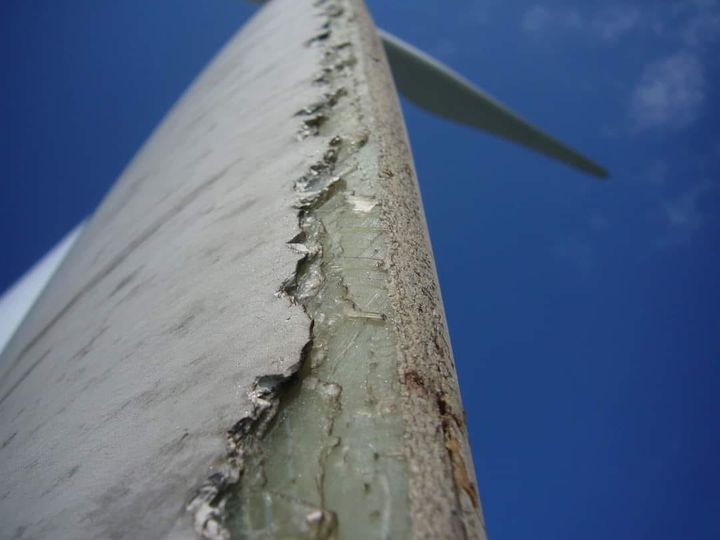
Wind Turbines – Environmental Impact of Carbon Microfibers
 Wind turbines, heralded as one of the pillars of sustainable energy, are not without their environmental drawbacks. One significant issue that has recently come to light is the loss of carbon microfibers from the turbine blades over the years due to abrasion at the wing edges. These carbon microfibers, which are tiny fragments of the composite materials used to manufacture the blades, become dislodged through natural wear and tear.
Wind turbines, heralded as one of the pillars of sustainable energy, are not without their environmental drawbacks. One significant issue that has recently come to light is the loss of carbon microfibers from the turbine blades over the years due to abrasion at the wing edges. These carbon microfibers, which are tiny fragments of the composite materials used to manufacture the blades, become dislodged through natural wear and tear.
Environmental Impact of Carbon Microfibers
Soil Contamination
As these carbon microfibers are released, they settle into the surrounding environment, including soils. The accumulation of these fibres can alter soil composition and structure, potentially affecting soil health and the organisms that inhabit it. Microfibers can disrupt the natural processes of soil microorganisms, which play a crucial role in nutrient cycling and plant health. This contamination could lead to a decline in soil fertility over time, impacting agriculture and natural vegetation.
Water Pollution
The microfibers are also likely to be carried by rain and surface runoff into waterways. Once in the water system, they can spread widely, contaminating rivers, lakes, and possibly even reaching the oceans. In aquatic environments, these fibres can be ingested by various organisms, from small plankton to larger fish, leading to bioaccumulation and potentially entering the human food chain. The presence of these fibres in drinking water sources is a significant concern, as their long-term health effects on humans are still not fully understood.
Health Implications
While the specific health risks associated with carbon microfibers are still being studied, there is growing concern about their potential impact. Inhalation of microfibers, similar to other fine particulates, could pose respiratory risks. If these fibres are present in drinking water, ingestion could lead to unknown health consequences. Research is needed to determine if these fibres can pass through biological barriers and accumulate in human tissues, which could lead to chronic health
Conclusion
As we continue to innovate in the field of renewable energy, it’s imperative to consider the full environmental impact of our solutions. Wind turbines provide clean energy but also contribute to environmental and visual pollution in ways that were previously overlooked.





Are the replacement costs factored in when compared with nuclear generation over a 60—to 80-year period of operation? I’d bet not!
The whole CO2 and Climate Change has been the greatest hoax in history created by the UN and assisted by the EU Assembly, and the Western democracies will suffer for their stupid decision for a few decades to come.
While the Woke’s refuse to look at the sensible solution of nuclear power they are content to pollute the environment with their man-made rubbish. It will take roughly 10 years to get the Nuclear up and running, meaning it should be in place by about 2036 at the latest. Let’s hope the coal system here can hold out for that long. I can’t imagine Albo’s methods of delusion supplying enough power to do the job.